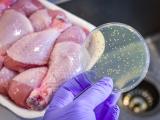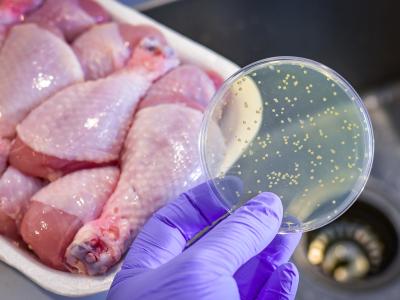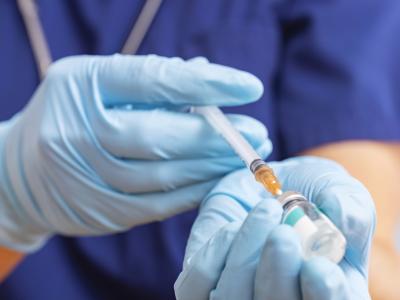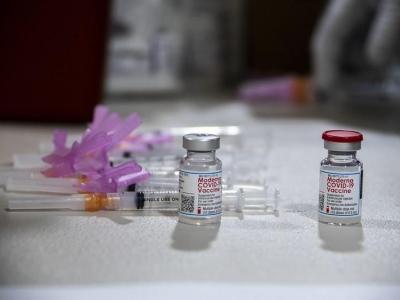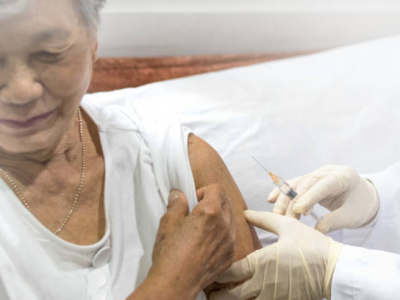Mar 12, 2012 (CIDRAP News) – A federal study of preslaughter interventions for reducing Escherichia coli in cattle identified several possibilities but found that only a few companies have submitted applications for products that target the pathogen at this processing stage.
The exception, according to the recent report by the Government Accountability Office (GAO), are vaccines to reduce E coli O157:H7 in cattle, but approval requirements are murky and could cause delays in clearing products.
In 2007, the GAO made federal oversight of food safety a priority area due to foodborne illness threats to the economy and to public health. In earlier reports, the GAO said the fragmented nature of the current system has led to inconsistent oversight, problems with coordination, and inefficient use of resources.
In a letter to US Department of Agriculture (USDA) secretary Tom Vilsack that accompanied the report, the GAO acknowledged that the USDA's inspection authority does not cover feedlots, where cattle are kept for about 140 days before slaughter, though the agency encourages beef producers to use preslaughter interventions to improve food safety.
From Jan 2011 through Mar 2012, GAO investigators visited several cattle feedlots and a slaughtering plant, and they interviewed federal officials who have a stake in food safety, beef industry representatives, consumer groups, and university researchers. They also explored studies on preslaughter interventions and reviewed research on the topic that the USDA has funded.
Investigators also explored the practices other countries use to reduce E coli contamination in cattle before slaughter.
The goal of the preslaughter interventions isn't to eliminate the pathogens but rather to reduce levels so that food safety steps in processing plants are more effective at controlling contamination.
The GAO investigators noted that some of the interventions may apply to six soon-to-be-banned non-O157 strains of E coli, but so far researchers haven't conducted the needed testing. The six strains that will be classified as adulterants in ground beef in June are E coli O26, O45, O103, O111, O121, and O145.
The main interventions identified were antimicrobials, bacteriophages, colicins, natural product extracts, prebiotics, probiotics, sodium chlorate, and vaccines.
For each intervention, the GAO fleshed out the status of the method and challenges that remain for bringing related products to market. For example, they noted that antibiotic use might be able to reduce E coli O157:H7 in cattle, but any benefit might be outweighed by the risk of developing more antibiotic-resistant strains.
The USDA and Food and Drug Administration (FDA) have cleared a mix of bacteriophages that can be applied to cattle hides in holding pens, and other researchers are testing an orally administered form. However, the GAO said research suggests that it's possible for E coli O157:H7 to develop resistance to some bacteriophages.
Sodium chlorate can be used to kill E coli O157:H7 in cattle stomachs and intestines, and a veterinary drug manufacturer is in discussion with the FDA about applying for approval to use the compound as an animal drug, the GAO said.
At least two companies have developed vaccines to target E coli O157:H7 in cattle, and one received a conditional license in 2009. Full approval is pending, according to the report.
In fiscal years 2009 and 2010, the USDA agencies approved about $35 million in research grants to explore ways to reduce E coli in cattle, the group wrote.
In their conversations with officials in other countries, the GAO learned that several, such as the United Kingdom and Australia, conduct hide cleanliness inspections before slaughter. US inspectors, in contrast, assess cattle health, but not cleanliness, before slaughter.
The GAO recommended that the USDA provide more specific guidance on license approval for E coli vaccines to help streamline the application process and to explore preslaughter practices that other countries use.
In its response to the GAO report, the USDA generally agreed with the draft report and didn't weigh in on whether it agreed or disagreed with the license approval guidance recommendation. It said it is committed to providing as much specific guidance as possible but was concerned that the more specific requirements might hamper product development efforts.
See also:
Mar 2012 GAO report on preslaughter E coli interventions
